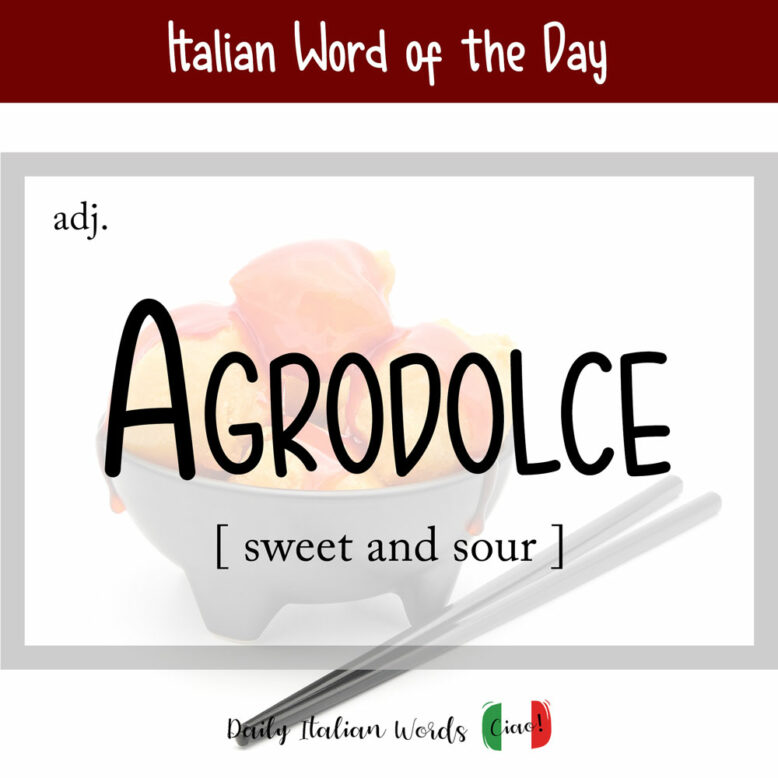The Italian translation for sweet and sour, as in a sweet food or drink with a sour aftertaste produced by vinegar or lemon, is agrodolce. Derived from the French aigre-doux, it is a combination of the words agro (tart, sour) and dolce (sweet).

A very popular sauce in Italy is salsa agrodolce, a traditional sweet-and-sour sauce used in many different dishes. Made by reducing sour and sweet elements such as vinegar (aceto) and sugar (zucchero), it is used for meat or served over pasta. Additional flavourings such as wine (vino), fruit (frutta), or even chocolate (cioccolato) may also be added.
Ho usato una salsa agrodolce per condire la carne.
I used a sweet-and-sour sauce to season the meat.

Agrodolce frequently appears in the expressions all’agrodolce or in agrodolce in reference to certain dishes such as, for example, peperoni all’agrodolce (sweet-and-sour peppers) or patate in agrodolce (sweet-and-sour potatoes).
In a figurative sense, agrodolce can be used to describe someone who on the surface may appear gentle and courteous, but underneath is hiding an internal state of anger, resentment or aversion.
Mi ha fatto un sorriso agrodolce.
He gave a tight-lipped smile.
Agrodolce ≠ bittersweet
Many online dictionaries suggest bittersweet as the best translation for agrodolce when used in a figurative sense. However we tend to disagree because in English, bittersweet refers to an emotion, a mixture of sadness and happiness, whereas in Italian, it refers to false appearances as explained in the paragraph above. A better translation for bittersweet in Italian is perhaps dolceamaro, which also indicates a mix of sadness and happiness when used in the figurative sense.
Heather Broster is a graduate with honours in linguistics from the University of Western Ontario. She is an aspiring polyglot, proficient in English and Italian, as well as Japanese, Welsh, and French to varying degrees of fluency. Originally from Toronto, Heather has resided in various countries, notably Italy for a period of six years. Her primary focus lies in the fields of language acquisition, education, and bilingual instruction.


